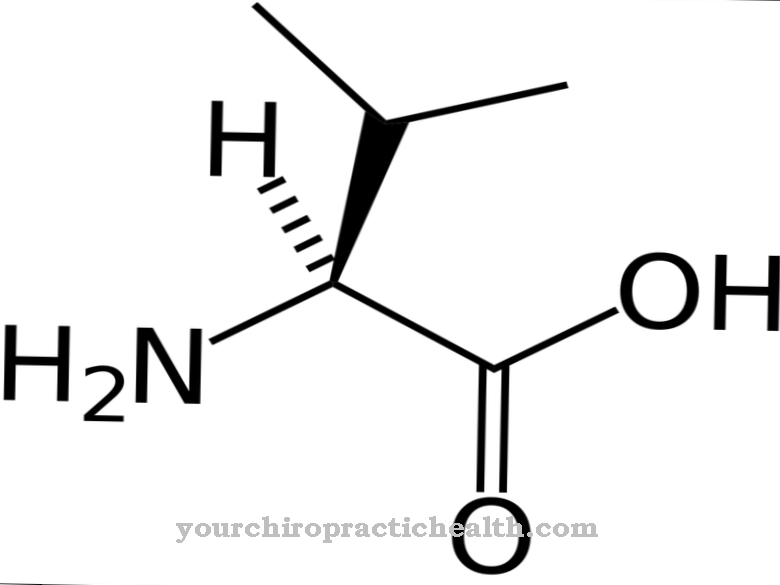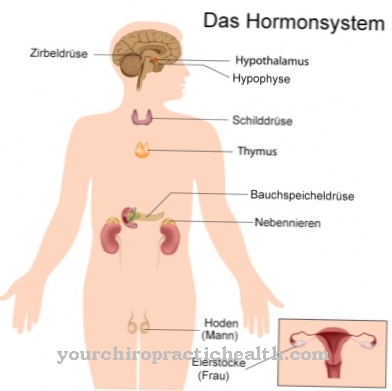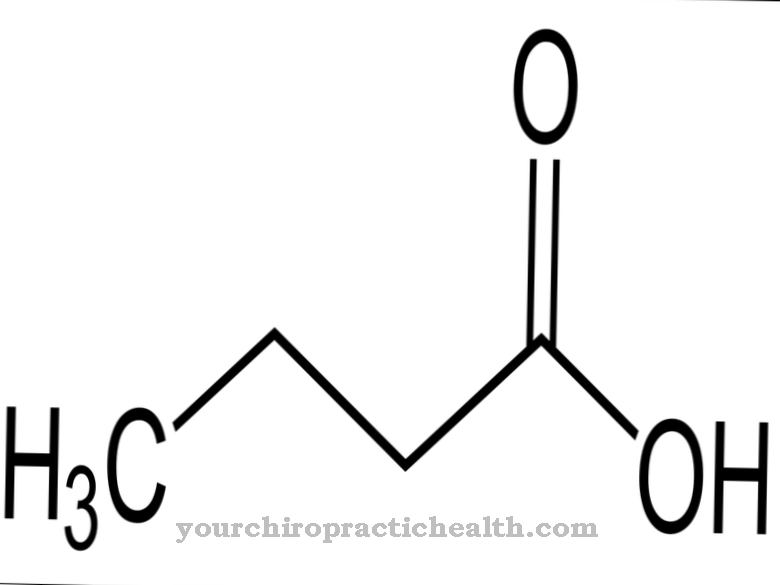glucose is also known colloquially as grape sugar and belongs to the group of carbohydrates. Glucose is the most important source of energy for the body. Diseases of the liver, the endocrine system or the kidneys can lead to disorders in the glucose metabolism.
What is Glucose?
Glucose is a so-called monosaccharide, a simple sugar. It is a component of normal household sugar and also a component of longer-chain carbohydrates such as starch or glycogen. Most fruits also contain glucose in addition to fructose. Dextrose belongs to the aldose family.
These are sugar molecules that have an aldehyde function. There are two different forms of glucose, D-glucose and L-glucose. But only D-glucose is of natural origin. It is also known as grape sugar. In the past one spoke of the dextrose. In the crystalline state, the glucose appears as a white water-soluble powder with a sweet taste. From a chemical point of view, glucose is a polyalcohol with a molecular structure made up of six carbon atoms. The exact chemical formula of glucose is C6H12O6.
Function, effect & tasks
Glucose is the human body's most important source of energy. On average, an adult person needs around 200 g of glucose per day when resting. Most of the glucose ingested, namely around 75 percent, is consumed by the brain.
The brain and red blood cells cover their energy needs solely from glucose. The release of energy occurs in the mitochondria of the body cells through the breakdown of glucose. The process of breaking down glucose is also known as glycolysis. Glycolysis produces two ATP molecules, among other things. ATP is an abbreviation for adenosine triphosphate. The molecule serves as an energy store within cells and is required in numerous metabolic processes. A man who weighs around 80 kilograms uses an estimated 40 kilograms of ATP per day. Glycolysis not only creates these two ATP molecules, but also other products. These are further processed in the so-called citrate cycle.
The citrate cycle combines the breakdown pathways of carbohydrates, proteins and fat. The end products of the citrate cycle are in turn required for the respiratory chain in the mitochondria, the power plants of the cell. During the process of cell respiration, a further 38 ATP molecules are created.
Education, occurrence, properties & optimal values
Glucose is a component in double sugars such as milk sugar (lactose) and cane or beet sugar (sucrose). Glucose can also be found in multiple sugars such as raffinose and in multiple sugars such as glycogen, starch or cellulose. Glucose is therefore a component of numerous foods. The industrial production takes place by enzymatic cleavage of corn or potato starch. That is why glucose was previously also known as starch sugar.
From a biochemical point of view, glucose is mainly produced in plants by photosynthesis from water, sunlight and carbon dioxide. Normally, however, glucose is not in free form in plants, but is embedded in cell structures. It is only during digestion that these cell structures are broken down and broken down into glucose. This requires enzymes. Carbohydrate digestion in humans begins in the mouth. The enzyme amylase is found in saliva, which breaks down carbohydrates and thus releases glucose.
In the small intestine, carbohydrate digestion then continues with enzymes from the pancreas. Since glucose is of vital importance to the human body, there is an emergency mechanism for periods of food abstinence. The liver and kidneys are able to synthesize glucose. This process is also known as gluconeogenesis. From a chemical point of view, gluconeogenesis is a reversal of glycolysis, whereby gluconeogenesis has a high energy requirement. Six molecules of ATP are used to make one molecule of glucose.
If more glucose is absorbed than the body needs, it is converted to glycogen. Glycogen synthesis takes place in the liver and muscles. The glycogen is stored there and then converted again when there is an increased need for glucose. This process is called glycogenolysis. However, some of the glucose always circulates in the blood. This is the only way the energy supplier can get to the cells. Insulin is required for absorption into the cells. The level of glucose in the blood is also known as blood sugar. The normal fasting blood sugar should be below 110 mg / dl or below 6.1 mmol / l. From values of 126 mg / dl or 7.0 mmol / l a manifest diabetes mellitus is present.
Diseases & Disorders
Diabetes mellitus is a metabolic disease that is associated with high blood sugar levels. A distinction is made between type 1 diabetes mellitus and type 2. Type 1 diabetes mellitus is an absolute insulin deficiency due to a disorder of the pancreas.
In type 2, on the other hand, sufficient insulin is usually still produced, but due to insulin resistance, the glucose is no longer properly absorbed by the body cells. Diabetes mellitus manifests itself as a strong urge to urinate, increased thirst or dry skin and susceptibility to infections.The long-term consequences of increased blood glucose levels are feared. An elevated blood sugar level is also known as hyperglycaemia.
Damage to the small and large arteries and nerves leads to eye and kidney diseases. In the context of diabetes, but also due to other diseases or metabolic processes, hypoglycemia can also occur. Hypoglycemia is when the blood sugar level is too low. If the blood sugar level is below 50 mg / dl, symptoms such as sweating, clouded consciousness or coma occur. Often hypoglycaemia occurs after an overdose of insulin or oral antidiabetic drugs.

.jpg)






















.jpg)



